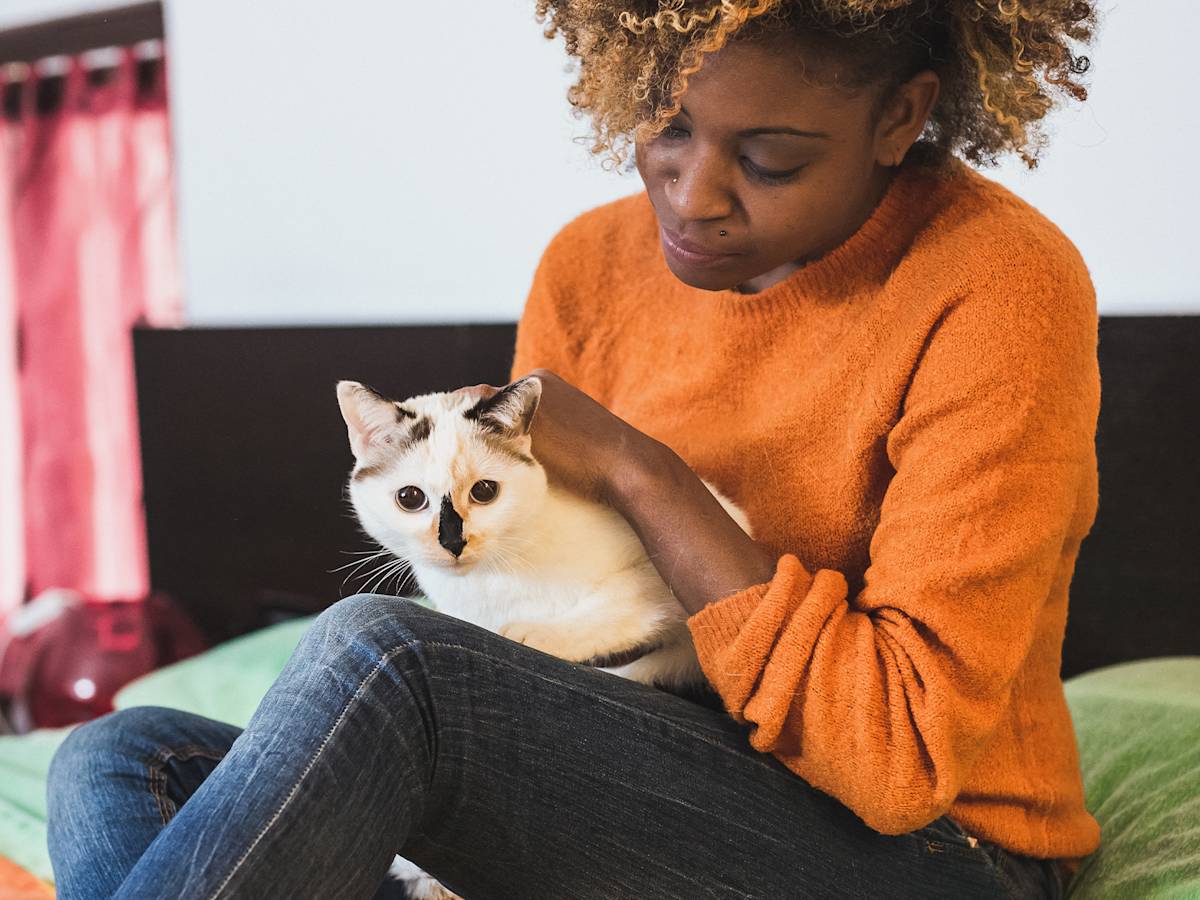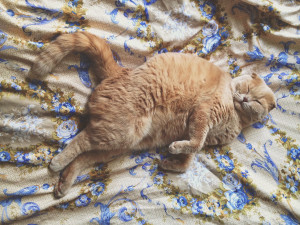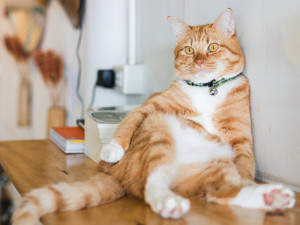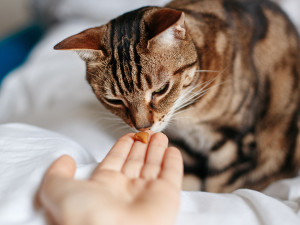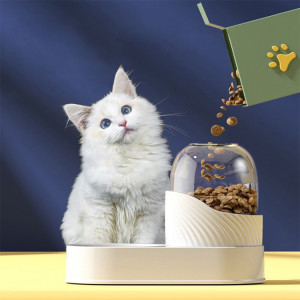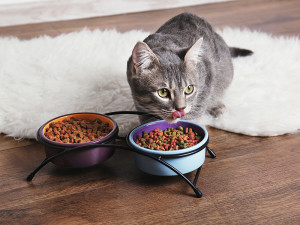Don’t Come For Us, But Is Your Cat Overweight?
We love a chonky cat, but here’s what you should know.
Meal prepping may give you a sense of control in a chaotic world, but when your cat gives you that food is love look you can’t help but cave and dole out the tuna treats with abandon. While there can never be too much cat, there can be too many vet bills. As if the existence of an Association for Pet Obesity Preventionopens in new tab wasn’t telling enough, said association reports that a whopping 60 percent of cats are overweight or obese. And those extra pounds are associated with outsize issues including osteoarthritis, heart disease, and diabetes.
How Heavy Should Your Cat Be?
“Sometimes owners have difficulty recognizing that their cats are overweight,” says Dr. Bruce Kornreich, director of the Cornell Feline Health Center. Although the average cat weighs around 10 pounds, a Maine Coon is significantly heavier than a Siamese cat. This is why veterinarians don’t use a scale, but rather, rely on a visual assessment or Body Condition Scoring Systemopens in new tab (BCS), which ranks from one to five — three being considered the ideal weight. As such, your cat would have an hourglass figure with a visible waist and an abdominal ‘tuck’ where their belly meets their hips. While cats with visible vertebrae are considered underweight, cats with an ‘obvious rounding of the abdomen’ (rude!) may need to start counting their macros.
Save on the litter with color-changing tech that helps you better care for your cat.
How to Help an Obese Cat Lose Weight
If you’re not convinced, a 2020 studyopens in new tab titled, “Positive attitudes towards feline obesity are strongly associated with ownership of obese cats” might be onto something. Busted? Don’t worry — you’ve got a plan. Indoor cats with 24/7 access to kibble-filled bowls are more likely to be overweight, so close the buffet, start a feeding schedule, portion out meals, and cut back on treats. Your vet can create a tailored weight reduction plan or write a prescription for a low-calorie diet, if needed.
Don’t expect your kitty to drop weight overnight, either. The poor thing has an unfairly slow metabolism. “The amount of weight your cat loses will vary depending on their food intake and activity level,” says Dr. Kornreich, who suggests setting a weight loss goal of 0.5 to two percent of body weight per week, which is less than seven ounces for a 20-pound cat. “[Slow weight loss] can be frustrating for cat owners but losing weight too fast could cause metabolic problems.”
Your cat may also need to start exercising. If parading your cat around on a walk would be humiliating (to your cat), there are tons of motion-activated cat toys, climbing towers, and interactive puzzle feeders on the market to get your cat moving. If all else fails, we’ve never met a cat who didn’t love an old-school laser pointer.
